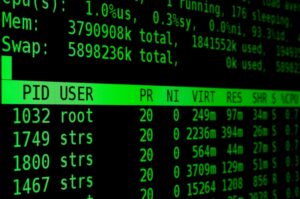Hestia is a web-based GUI for configuring NGINX, Apache, and PHP-FPM. Jack Wallen shows you how to get this up and running on Ubuntu Server 20.04.

Image: iStock/metamorworks
If you’re a web admin and you’re looking to make your job a bit easier, you probably have your eyes on a control panel. Such tools are generally web-based GUIs that make your job considerably easier. You might have a fine grasp on the command line tools necessary to get the job done, but having a GUI makes your work more efficient.
On top of that, when you assign tasks to lesser admins, you can be sure you find them staring at the screen, wondering what to do next.
One tool for that task is the open source, Hestia Control Panel. Hestia features/supports:
-
Apache/NGINX management
-
DNS server management
-
Multiple PHP versions
-
MariaDB or PostgreSQL database management
-
POP/IMAP/SMTP mail services with Anti-Virus
-
Firewall with brute-force attack detection
Hestia supports the following platforms:
-
Debian 9
-
Debian 10
-
Ubuntu 16.04 LTS
-
Ubuntu 18.04 LTS
-
Ubuntu 20.04 LTS
I’m going to walk you through the process of installing Hestia on Ubuntu Server 20.04.
SEE: Top 5 programming languages for systems admins to learn (free PDF) (TechRepublic)
What you’ll need
How to upgrade Ubuntu and install the dependency
Before you install Hestia, let’s first upgrade the server. To do that, log in to Ubuntu and issue the following two commands:
sudo apt-get update sudo apt-get upgrade -y
If the kernel upgrades in the process, you’ll need to reboot the server, otherwise continue on with the lone dependency.
In order to successfully install Hestia, run the following command:
sudo apt-get install ca-certificates -y
How to install Hestia
The developers have created a handy installer script, which can be downloaded with the command:
wget https://raw.githubusercontent.com/hestiacp/hestiacp/release/install/hst-install.sh
Run the installer with the command:
sudo bash hst-install.sh
The script will check to see if you have any unmet dependencies or any conflicting software. Should Hestia discover any conflicts, allow it to remove them by typing y (Figure A).
Figure A
” data-credit rel=”noopener noreferrer nofollow”>
Hestia needs to remove Apache, so it can then reinstall it.
You will then be presented with the list of software Hestia will install (Figure B).
Figure B
” data-credit rel=”noopener noreferrer nofollow”>
Hestia informs you what it will install.
Type y to continue. After that, you’ll need to supply the installer with an admin email address and the FQDN of the server. The installer will then begin the process of downloading and installing all software. This process can take up to 15 minutes or longer, depending on your network connection and the speed of your server.
When the installation completes, you will be presented with an admin password to use to log in to the GUI (make sure to save that in your password manager). You will also be asked to reboot the server. Go ahead with the reboot.
Once the server has restarted, open a web browser and point it to https://SERVER:8083 (where SERVER is either the IP address or FQDN of the hosting server) and log in with the username admin and the password presented to you by the installer. You will then find yourself on the Hestia main page, where you can begin working with your server (Figure C).
Figure C
” data-credit rel=”noopener noreferrer nofollow”>
The Hestia main page is ready for work.
Congratulations, you now have a handy GUI to help you work with NGINX, Apache, and PHP-FPM. There are certainly more powerful control panels out there, but Hestia is quick and easy to install and might be just enough for the job.
Subscribe to TechRepublic’s How To Make Tech Work on YouTube for all the latest tech advice for business pros from Jack Wallen.
Also see
Source of Article






